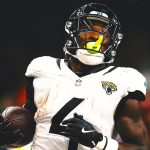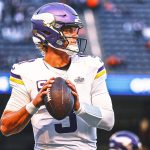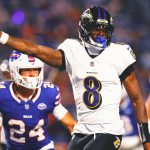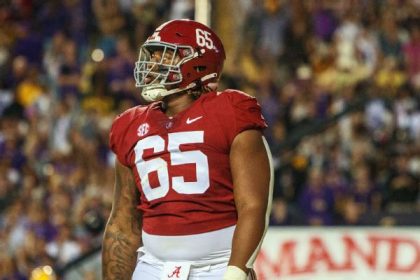On Sept. 6, the end felt near in Arlington.
Outfielder Adolis García slammed his right hand in frustration against the warning-track dirt at Globe Life Field, upset that his second-inning attempt to rob a Michael Brantley home run had come up empty.
But there was more.
The failed jump left him in obvious pain, forcing the Texas Rangers‘ home run and RBI leader out of the game after a visit from a trainer. Tests would reveal a strained patellar tendon in his right knee that would send him to the injured list, making García the latest casualty in a promising season that suddenly seemed to be going off the rails.
ADVERTISEMENT
At the time, Texas was already missing All-Star rookie third baseman Josh Jung, who had fractured his thumb the previous month. All-Star catcher Jonah Heim and All-Star pitcher Nathan Eovaldi had both returned from injuries in an effort to help the playoff push, but neither looked right. The home run off Brantley’s bat was one of 16 from the Astros in a three-game sweep that ran the Rangers’ skid to 15 losses over a 19-game stretch, bumping them out of first place in the American League West and a half-game back of a playoff spot.
With García out, and the season in the balance, a door opened.
It was time for top prospect Evan Carter.
“We had talked about bringing up Evan even before we had the injury, that’s how much we think of him,” manager Bruce Bochy said. “We got a little banged up there and thought, ‘This kid’s pretty close.’ We were talking about him quite a bit, and Adolis went down and we needed help. He’s provided that.”
Carter was only 20 years old when the 2023 season began, but he never felt far away from a major-league call after starting spring training in big-league camp. His belief only strengthened as the year continued.
At every stop on the journey, he demonstrated his readiness.
Carter was a surprise second-round selection in the shortened 2020 draft, having played only a handful of games as a senior at Elizabethton High School in Tennessee before the pandemic cut his season short. Instead of going to Duke, he signed for under-slot value with the Rangers, who envisioned the five-tool potential that others did not.
The speedy outfielder’s advanced plate discipline, pitch recognition and ability to hit to all fields helped him zoom through the system. At 19 years old last year, Carter hit 36% better than league average as the youngest player on his high-A Hickory club. He showcased his offensive skill set with 11 homers, 10 triples, 18 doubles and 26 steals.
This offseason, while he didn’t want to change too much of what had been working, he cleaned up his setup and bat path in a way that allowed him to get a more consistent load and gather as he prepared his swing. The results kept coming.
“I was always under the impression this could be the year,” Carter reiterated to FOX Sports.
Again the youngest player on his team, the reigning Rangers minor league player of the year registered the highest wRC+ of any player on Double-A Frisco’s roster. In the process, Carter also logged the third-highest on-base percentage among all qualified Double-A players.
On Aug. 29, he earned a call to Triple-A and went 4-for-6 in his first game with Round Rock.
“With all of our players and player development, there’s not a specific, spelled-out timeline,” Rangers general manager Chris Young told FOX Sports. “They will tell us when they’re ready by their performance. Evan, over the course of the summer, took steps and put himself in position to be ready for this.”
Over recent months, Young felt that he had seen a different level of confidence in Carter’s game. Young didn’t want him to feel like he had to save the season, but felt strongly that Carter would be capable of handling the environment and pressures of a pennant race and possessed the baseball acumen to make the jump.
Just eight games into his Triple-A career, and 10 days after celebrating his 21st birthday, Carter got the call-up to the big leagues.
“We didn’t want to set unfair expectations for him, especially at a point when the team was struggling, but we were confident that he was going to be a boost for us,” Young said. “I can’t say we expected it to be this impactful.”
A week after Carter’s arrival, the Rangers were back in the playoff mix, occupying the second wild-card spot. They ran off a six-game winning streak. Carter helped breathe life into Texas’ dwindling postseason hopes, registering a 1.059 OPS over 23 major-league games.
His elite plate discipline and patience both paid off. Among major-leaguers with at least 75 plate appearances, Carter finished the year with the lowest chase rate in the game, a .413 on-base percentage that trailed only Ronald Acuña Jr.‘s and a .645 slugging percentage that trailed only Shohei Ohtani‘s. Carter also saw 4.48 pitches per plate appearance — again, the second-highest mark in the sport — and showed off his wheels with the highest average sprint speed of any active Rangers player.
The power was the most unanticipated boon. The wiry 6-foot-2 outfielder doesn’t possess the raw strength of most top prospects, but his bat packs enough punch that he can punish any pitch that catches too much of the middle or inner half of the plate, where he can tap into his pull-side pop.
After hitting 13 homers in 108 games between Double-A and Triple-A this year, Carter launched five in September as a big leaguer. All of them went to right field. They weren’t all gimmes, either. His first home run went 406 feet off Chris Bassitt in Toronto. Carter hit homers off a four-seamer, a cutter, a slider and two changeups, the longest of which traveled 421 feet, and averaged a 46.2% hard-hit rate that ranked just behind Jung for the fourth-highest mark among active Rangers players.
Of course, it’s a small sample. While Carter’s home run totals might not be sustainable, it’s unlikely his elevated 32% strikeout rate will stay that high, either. As the No. 9 hitter, getting on base and turning the lineup over to the Rangers’ power threats is all he’ll need to do in order to bring value in October. He knows that.
“All I really want to do right now is help the team win,” Carter said. “It’s a star-studded lineup, man, it’s crazy. You look around the locker room sometimes, like, ‘Holy cow, you’re playing with this guy. But whatever needs to be done, that’s all that matters.”
It’s an opportunity he will have earned after his production bought time for the Rangers lineup to get whole again.
Both Jung and García returned on Sept. 18. In addition to allowing Carter to make the jump, the 12 days off for García seemed to give the All-Star a much-needed reset as well. García was hitting .147 with five home runs over 25 games before his injury. He has looked refreshed since. In 13 games after his return, García added another five homers while batting .256.
On Sept. 27 in Anaheim, in a 5-0 win that moved the Rangers a game away from clinching a playoff spot, it was Carter and García leading the offensive charge. And on Sunday in Seattle, with Texas needing another win to clinch the division, it was Carter notching two of the Rangers’ four hits.
It wasn’t enough to prevent a wild-card matchup against the Rays, which begins Tuesday in Tampa, but it was plenty to demonstrate Carter’s worthiness of the opportunity he always thought might come.
“I like to go out to the field before the games start and kind of look around and take it all in just to back up and take it into perspective,” Carter said. “You don’t want to just let it fly by without realizing kind of how fun this is.”
Rowan Kavner covers the Dodgers and MLB as a whole for FOX Sports. He previously was the Dodgers’ editor of digital and print publications. Follow him on Twitter at @RowanKavner.
MLB trending
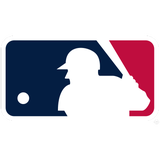
Get more from Major League Baseball Follow your favorites to get information about games, news and more

